How to reduce burning loss effectively in aluminum melting
How to reduce burning loss effectively in aluminum melting
Aluminum is an element in Group III A of the periodic table. It is an active metal less than K, Ca, Na, and Mg.
It can interact with oxygen, nitrogen, water vapor, carbon dioxide, etc. in the air under high-temperature conditions.
Aluminum melting and casting refer to the process of alloying, mixing, stirring, standing, refining, skimming and other processes of liquid aluminum into finished or semi-finished products of aluminum ingots, billets or other shapes.
Aluminum and aluminum alloys will experience varying degrees of loss due to oxidation, refining, skimming and other reasons during the melting and casting process.
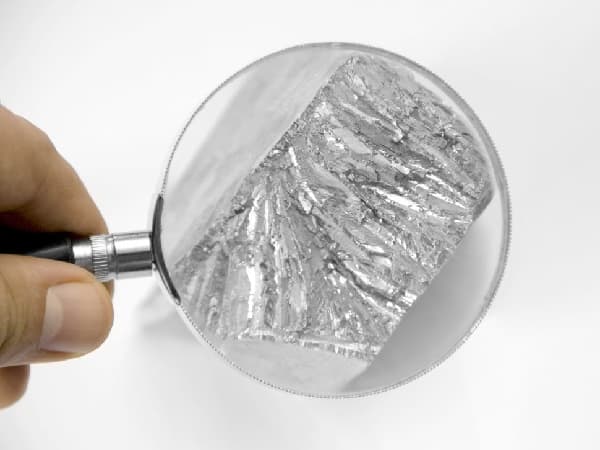
Aluminum melting loss is the general term of the unrecoverable metal loss and the metal contained in aluminum dross caused by oxidation, volatilization, and interaction with furnace walls and refining agents during the smelting process of aluminum and aluminum alloys.
The general calculation formula for melting loss is:
(amount of primary aluminum-amount of the finished product) ÷ amount of primary aluminum × 100%.
The higher the melting loss, the less the amount of finished product.
For aluminum recycler with an annual output value of 100,000 tons, if the melting and casting loss is reduced 0.1%, without additional investment, can produce 100 tons of aluminum products (that is, reduce the burning loss of 100 tons of aluminum products), which will be considerable social and economic benefits, so how to effectively reduce casting loss is very important.
The reverberatory furnace is used to smelt aluminum alloy.
Due to the different charge, the dross amount is 2% to 5% of the charging amount, and the aluminum content in the dross is about 40-60% of the slag amount.
Therefore, the correct treatment of aluminum dross and the recovery of aluminum in the dross to reduce melting loss are of great significance. Aluminium dross machine is a must for aluminium scrap recycling factories.
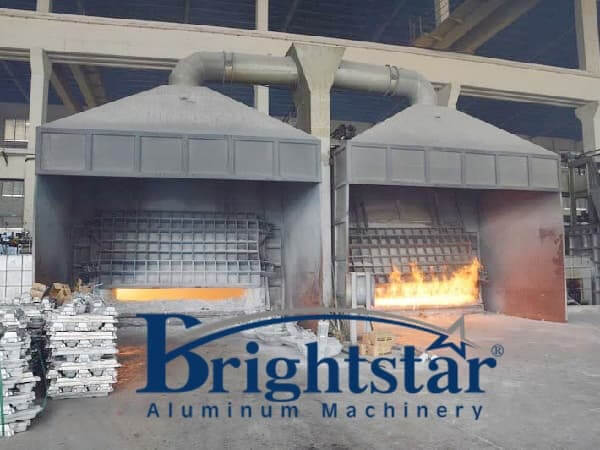
Analyze the causes of melting and casting loss
The main external forms of melting loss can be divided into two parts: one is in the form of pure aluminum dross, and the other is in the form of bulk aluminum and inferior aluminum and aluminum slag.
Statistics in the melting and casting workshop in some aluminium industry companies, among them, non-recyclable pure aluminum dross accounts for about 90% of melting and casting loss (oxidation burning loss and slag formation), other factors account for about 10%, the further statistical analysis of data for other factors account for 10%, it is mainly caused by the furnace remelting burning loss of large aluminum and inferior aluminum and the aluminum content in aluminum dross.
Therefore, the main cause of internal melting loss is oxidation, burning loss, secondary burning loss of inferior aluminum, aluminum content in aluminum dross.
The principle of aluminum oxidation burning loss can be further understood by the following chemical equation:
4Al+3O2═2Al2O3
The thermodynamic study of metal oxidation shows that: the tendency of metal oxidation, the order of oxidation of each alloy element and the degree of oxidation are all determined by the affinity of the metal and oxygen, and are related to the composition, temperature and pressure of the alloy.
The greater the affinity of the metal to oxygen, the greater the tendency of its degree of oxidation, and the higher the degree of oxidation; the higher the temperature, the greater the affinity of metal to oxygen, the greater the tendency of its degree of oxidation, and the higher the degree of oxidation;
The lower the decomposition pressure of oxide, the greater the affinity of the metal with oxygen, the greater the tendency of its degree of oxidation, and the higher the degree of oxidation.
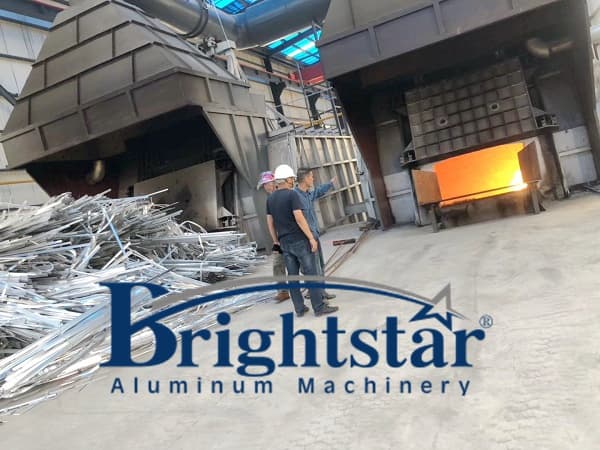
In the melting temperature range, aluminum has a strong affinity with oxygen and is easily oxidized.
After oxidation, an Al₂O₃ film is formed on the surface. When it is higher than 500℃, it becomes a metastable r-Al₂O₃.
This metastable oxide film is stable. During the transformation of the oxide film, the volume shrinks and further oxidation and cracking occur.
As the temperature and time of the molten aluminum increase, the oxide film grows faster, and the amount and thickness of the oxide also increase significantly
Factors affecting melting loss are:
1. Liquid aluminum temperature;
2. Contact strength of liquid aluminum and oxygen;
3. Aluminum content in aluminum slag;
4. Liquid aluminum brought out by skimming;
5. The percentage of aluminium scraps materials;
6. Melting loss of other causes
Here are 8 Effective Ways to reduce melting loss
1. control the temperature of liquid aluminum
The melting point of aluminum is 660℃. Generally speaking, the melting temperature of primary aluminum is controlled at about 730℃ or even lower.
The fluidity of aluminum alloy is relatively lower than that of primary aluminum, about 710℃-730℃.
For units that directly use the liquid aluminum in the electrolytic cell, when the high-temperature aluminum liquid enters the mixing furnace, the cold material should be added in time, that is, the inferior aluminum, aluminum slag, etc. can be added to the mixing and holding furnace, and part of the intermediate alloy (industrial Silicon) is added to the furnace in advance to form a pressure-melted state, which not only increases the actual yield but also reduces the temperature.
At the same time, the surface of the added cold material should be clean and free of oil and dust, otherwise, it may burn and release heat and promote burning.
In short, effectively reducing the temperature of the molten aluminum to the corresponding melting temperature can reduce the great influence of temperature on melting loss.
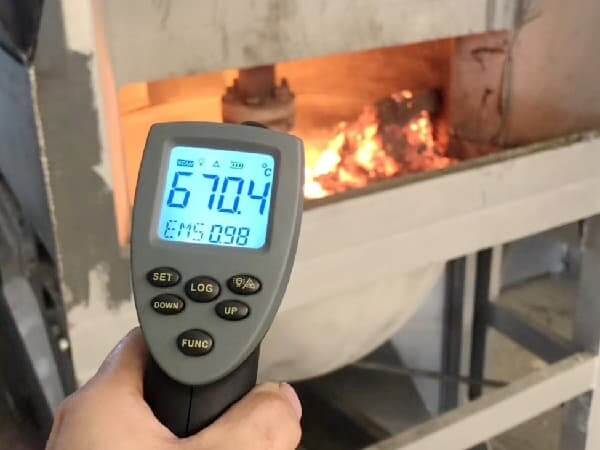
2. Reduce the contact strength between liquid aluminum and air.
The greater the contact strength between liquid aluminum and oxygen, the more serious the oxidation burning loss and the greater the melting loss.
2.1.Reduce the contact time between liquid aluminum and oxygen
Under the conditions of meeting production needs, turn the liquid aluminum in the furnace into finished products as quickly as possible.
It is best to produce on duty and produce on duty, and do not allow liquid aluminum to stay in the furnace for too long;
Reasonable Install melting and casting equipment to shorten the length of the launder as much as possible to reduce the exposure time of liquid aluminum in the air.
At the same time, an aluminum silicate insulation board can be placed on the upper part of the launder, which can not only keep warm but also reduce the oxygen content in the launder.
In short, it is necessary to prevent the molten aluminum from being stored in the furnace for a long time due to various reasons, so as to reduce the contact time between the molten aluminum and oxygen to reduce melting loss.
2.2. Control the mixing method of liquid aluminum
Whether it is manual mixing or mechanical mixing, it is carried out with the furnace door open, which will not only bring about huge fluctuations in the liquid level, increase the contact area with oxygen, but also increase the oxygen content in the furnace.
It is bound to accelerate the above-mentioned chemical reaction and increase the burning loss.
Electromagnetic stirring can be carried out in a closed state and the liquid level fluctuation is small, which effectively avoids the corresponding disadvantages.
At the same time, it can also reduce the moisture in the air entering the furnace and reduce the probability of hydrogen absorption by the liquid aluminum.
2.3.Controlling the bubble height during liquid aluminum refining
The general refining method is to manually sprinkle the refining agent into the furnace, and then perform stirring and refining, but for some alloy production, nitrogen feeding refining is required (the refining time is longer, up to about 30 minutes) , There will inevitably be a certain blowing height, horizontal to the side, vertical to the head, driving the huge fluctuation of the liquid aluminum, so it is best to adjust the nitrogen pressure to control the blowing height at 10-15mm.
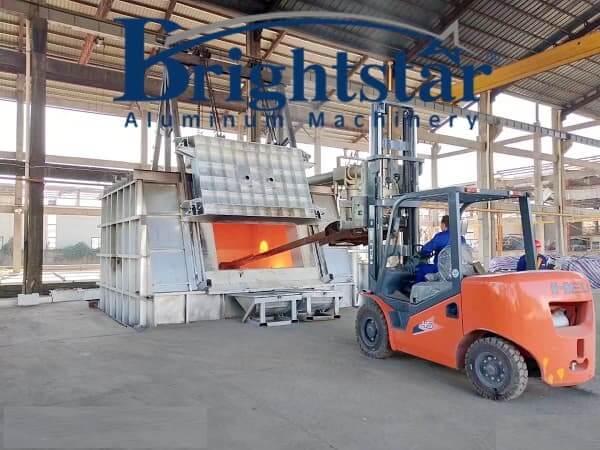
3. Correctly select and use refining agent to fully separate aluminium and dross
In the process of smelting aluminum and aluminum alloys, in addition to its own inclusions, aluminum can easily form alumina or sub-alumina with oxygen, resulting in a layer of scum on the surface of the aluminum liquid, which has a certain degree of wettability with the aluminum melt.
There is a considerable amount of melt in the mixture, so a refining agent is needed to change the wettability of both, increase the surface tension at the interface between the slag and aluminum, and separate the slag and aluminum.
The flux for aluminum and aluminum alloys is generally composed of chlorides and fluorides of alkali metals and alkaline earth metals, and its main components are KCl, NaCl, and NaF. CaF2, Na3A1F6, Na2SiF6, etc., but the composition content is quite different, and the effect is also different.
In addition to using the flux produced by the flux factory, it is best to adjust the flux composition ratio according to the composition of the aluminum alloy to be smelted.
At the same time, strictly control the refining process conditions, such as the amount of flux, contact time between the flux and the melt, contact area, stirring condition, temperature, etc.
The use of refining agents can effectively reduce the aluminum in the slag and reduce the melting loss.
4. Effective treatment of aluminum dross generated in the melting process
Aluminum dross is an inevitable part of the melting and casting process.
Although relevant measures are taken, a certain proportion of metal aluminum will be taken out, and it needs to be effectively treated instead of directly sold to other units.
The simplest and most economical method can be aluminium dross repeatedly ball milled and then screened effectively recover aluminium from the dross.
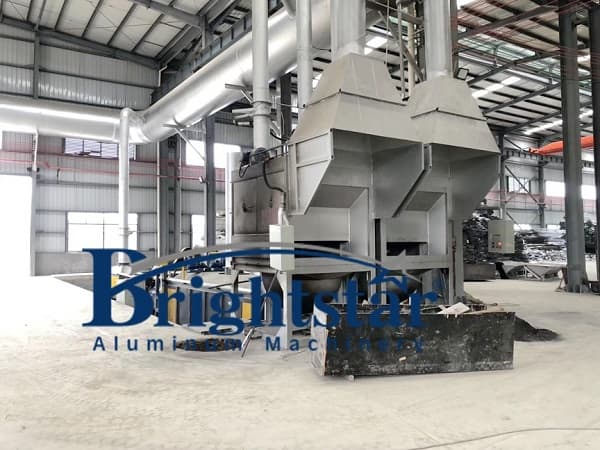
5. Reduce the slope of slagging in the furnace, and fully pull aluminum dross out of the furnace
The slope of the skimming of the furnace directly affects the amount of aluminum dross.
If the slope is too large, most of the slag will not be pulled out, resulting in a large amount of aluminum dross and aluminum settlings, and the slag and aluminum settlings cannot be recovered in time when the furnace is cleaned.
On the premise of ensuring the capacity of the furnace, reduce the slope of the slagging slope as much as possible.
6. Strictly control the quality of skimming to prevent liquid aluminum from being taken out
The existing slagging operation basically uses a large rake to pull the aluminum dross out of the door of the furnace.
In this operation, in addition to requiring careful operation by personnel, do not take out the molten aluminum as much as possible.
At the same time, the design of the large rake also needs to be exquisite.
Several rows of small round holes are made on the surface of the rake so that the liquid aluminum contained in the aluminum slag can flow into the furnace, otherwise, the excessive liquid aluminum will be taken out and returned to the furnace again, which will cause burning loss.

7. Reduce the amount of defective aluminum and bulk aluminum
In the production process, strictly follow the process requirements to ensure that one furnace is produced and one furnace is qualified.
Especially in the production of general aluminum, the production of inferior aluminum such as flash, burrs, ripples, and weight inconsistencies is avoided as much as possible.
Before the end of production, push the liquid aluminum in the launder into the mold as much as possible to form a qualified product to reduce the amount of bulk aluminum.
8. Effectively treat the defective aluminum that has been produced
For inferior aluminum, bulk aluminum, aluminum dross, aluminum shot, etc., which are produced for various reasons, charge them into the furnace in the proper order of charging.
If necessary, perform the recombination operation of waste materials to avoid unnecessary burning loss.
Through the above analysis, although melting loss is inevitable in the melting process, measures such as controlling the temperature of the molten aluminum, reducing the contact strength between the molten aluminum and air, controlling the aluminum content in the aluminum ash, and reducing the amount of aluminum scraps can effectively reduce melting loss in the melting process, which will produce significant effects, and it will also bring considerable economic benefits to the factories.

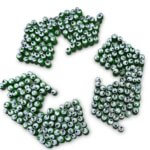
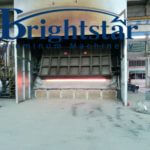
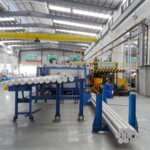
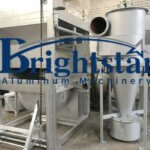





Great post.
Hi there friends, fastidious article and pleasant urging commented at this
place, I am in fact enjoying by these.
Comment *valuable inputs.how to melt aluminium boring and swarf in electrical resistance furnaces?
Dear Sir
Thank you for your kind comment
For aluminium boring and chips melting, our recommendation is double chamber melting furnace with side well vortex stirring system.
Take care and be safe
Best regards
Brightstar Aluminum Machinery